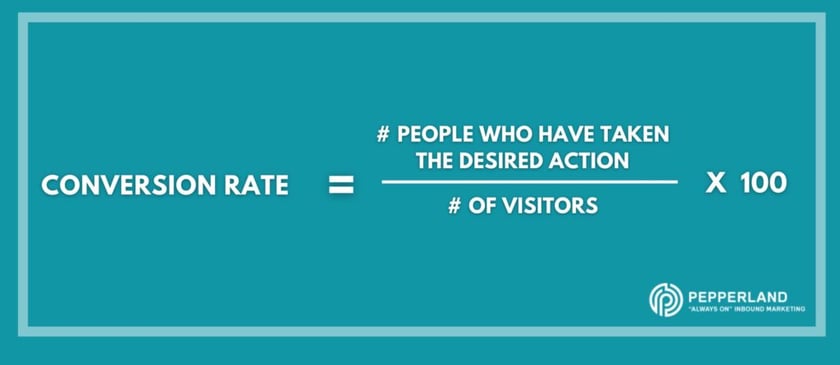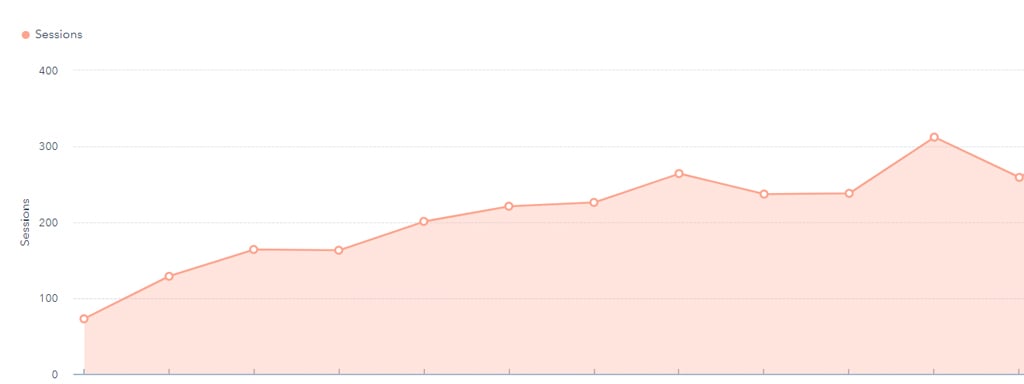Written By:
Will Purcell
Return on investment has always been the defining factor for nearly every marketing campaign, especially when it comes to content marketing. That’s why it’s critical to understand the proper tools and concepts to gain the most accurate ROI.
In the following article, we’ll explore how an editorial calendar can help track a blog’s performance by:
-
Explaining how to calculate content marketing ROI
-
Detailing how to track a blog’s performance
-
Highlighting examples of an Editorial Calendar optimized to increase ROI
Why is Content Marketing ROI important?
One of the greatest challenges for marketers often involves gaining buy-in from stakeholders. Sure, your marketing department’s ideas may be worthy of the time and effort needed to gain the desired results, but others may not initially agree.
That’s because in the modern world of business, it is essential for stakeholders to know the bottom line numbers. This allows them to be sure of the long term benefits of their investments.
For example, it’s likely you’ve heard some variation of the following questions when pitching content marketing ideas such as:
- Will this idea generate revenue?
- If so, how long will it take to produce results?
- What will this cost us?
Essentially, these questions stem from the simple question: Is this idea worth it?

That is why measuring your content marketing is so important. Demonstrating the ROI of your content strategies will provide the data needed to confidently answer that question every single time.
Measuring Content Marketing ROI
To calculate ROI, simply subtract your costs from the revenue your content generated. Then, divide that number by your costs and multiply by 100 (see below).

For example, let’s say that your content for the month generated $2,000. Your costs (including tools, man hours, etc.) was $1,200. Using the equation above, you can see that the ROI from your content marketing efforts was roughly 67%.
Are you creating content for the first time?
If your company has experienced successful content marketing campaigns before, it’s relatively easy to follow up with management to gain buy-in for future content ideas.
Maximize your Content with our FREE Editorial Calendar Template
But what if you’re tasked with creating content for the first time?
The key to digital marketing is to create the type of content that is not only high quality but also relevant to potential customers. Nurturing each visitor throughout their buyer's journey and generating revenue will ultimately determine the efficiency of your content marketing efforts.
Don't know how to start? There are a few techniques first-time content creators can use to develop a successful content strategy. Most notably, a competitor analysis is a great place to start.
Begin by making a list of 3-4 competitors actively blogging for their websites. This list will help highlight areas of success, or identify any gaps that could influence your own content efforts. Some tools you can use to analyze a competitor’s blog include:
- Ahrefs
- Google Search Console
- SEM Rush
- Moz
These tools are great for gaining insights into a blog’s performance, but how do you accurately track performance with real-time analytics and results?
Additional Resources:
- How To Create An SEO-Driven Editorial Calendar For Your Blog [PLUS FREE TEMPLATE]
- 9 KPIs that every Content Marketer Needs to Track
How to Track Your Blog’s Performance
1. Define your goals.
Goal setting initiatives are critical to mapping out a campaign’s success. Learn more about the 5 goals every organization should include in their content marketing efforts.
Content Marketing Goals:
- Search Engine Optimization
- Education
- Brand Awareness
- Conversion
- Retention and Brand Loyalty
These 5 goals offer a launching point for a variety of commonly used themes associated with content marketing campaigns.
Goal setting is essential to map the process for your content campaign. But for an accurate ROI, look no further than key performance indicators.
2. Determine Proper KPIs.
Key performance metrics, or KPIs, are quantifiable measurements that gauge your performance against your goals.
They go hand-in-hand with goal setting initiatives for content marketing campaigns by acting as checkpoints to help meet business goals. When creating a piece of content to publish on a blog, remember the KPIs your content marketing team should include in their research.
Page Visits
Page visits is the number of visitors that land on a specific website page. For blogging, this KPI helps you identify which posts are more successful than others.
A solid method to review page visits includes a thorough view of website sessions, which identifies the total number of visits to your website, including new and repeat visits.
It’s important to factor in the total number of published blog pages into your website sessions as well.
Hubspot’s Topic Cluster Report is a great tool to use for page visits because it creates a report showing the total number of website sessions for a selected group of blog posts within a campaign.

Users can view up-to-date analytics for selected dates, which is also available with a graph tracking progress as well.
Time on Page
Besides web sessions, factoring the amount of time users spend on a page is also critical in calculating ROI. That’s because an increase in time on page proves your blog is providing meaningful information for users.
A decrease in time on page means that your content should be optimized to better meet the needs of your visitors.
An important KPI to factor in time on page includes bounce rate, which represents the percentage of website visitors who enter your site and promptly leave instead of visiting other pages.
The audience overview report from Google Analytics is a great tool to determine your bounce rate. Much like Hubspot’s topic cluster report, users can review analytics over a selected date range with a graph tracking progress.
Conversion Rate
Conversion rate is a critical component to tracking ROI because it refers to the percentage of website visitors who take a desired action. For content marketers, the desired action is usually a download or form submission, such as a newsletter or content offer download.
This helps determine the real value of your content. For example, if users visit your page, but aren’t converting, it probably means your landing pages, content offers, and blog aren’t as valuable as they need to be.
In that case, a thorough review, or optimization should be the next step to boost content.
To calculate this essential KPI, check out the formula below:

Visitor to lead conversion rate can show how many visitors become known leads within a database (through newsletter signup or content offer downloads, for example).
3. Social Media Feedback
Social media is a great way to answer the question: What are people talking about? For marketers looking to gain insights into their blog’s social media metrics, there are several free tools available.
- Facebook Analytics
- Twitter Analytics
- Instagram Insights
- LinkedIn Page Analytics
These free tools provide an excellent overview of your blog’s success on a social level. By placing links to your blog’s social media channels at the footer of each blog post, you can help keep the conversation moving with your audience.
4. Conduct Backlink Audit
Link building is a key term for marketers and SEO strategists because a strong list of backlinks can significantly strengthen the search engine rankings for a website page.
When it comes to analyzing links for a web page, ahrefs backlink profile provides a thorough report with metrics, such as new links, external/internal links, and daily changes in link totals.
One possible solution to attracting links to your content includes identifying influencers or other sites who might be willing to link to your content once it’s published.
Getting other reputable websites or social influencers to link back to your content or share with their own audiences can be a great way to rank faster, while attracting new readers through the influencer’s own audience along the way.
Tools for outreach opportunities:
- Followerwonk
- Moz’s Open Site Explorer
- BuzzSumo
5. Keyword Rankings
Keyword rankings are critical to answer: Is your content providing answers to the questions users are asking?
This concept is key to the inbound methodology itself. Your blog helps guide users along their journey to selecting a product or service, which is why a strong list of keywords is critical for success.
There are several tools available (both paid and free) for researching the best possible keywords for a blog, however, when it comes to tracking a blog’s keyword performance, SEM Rush’s position tracker is particularly helpful.
This tool allows your content team to track keyword rankings over time for a specific website. With a visual display of success, or areas of needed growth, the position tracker is an excellent analytics tool to determine how your blog is performing with organic traffic.
6. Update your Editorial Calendar with Proper Metrics
So now that you have a list of KPIs to account for in your marketing efforts along with the proper tools to find the most accurate metrics, it is time to bring it all together.
The simple solution is to create an editorial calendar and keep it updated throughout each campaign. We recommend creating a calendar through Google Sheets, but any spreadsheet-style document works well.
And when it comes to evaluating the metrics associated with content marketing ROI, the more information the better. That’s because content marketing ROI involves a balancing act between what has, or hasn’t been working.
Additional Resources:
Maximizing your Content Marketing ROI
An editorial calendar provides the framework for the metrics involved with content marketing ROI, but it’s equally important to understand how these metrics impact your campaign overall.
A great place to start evaluating your blog’s performance is to create an SEO-driven editorial calendar that tracks all of your metrics under a shared document.
Need help getting started? Download our free editorial template or contact us to start tracking your blog’s performance and generate the highest possible ROI!












